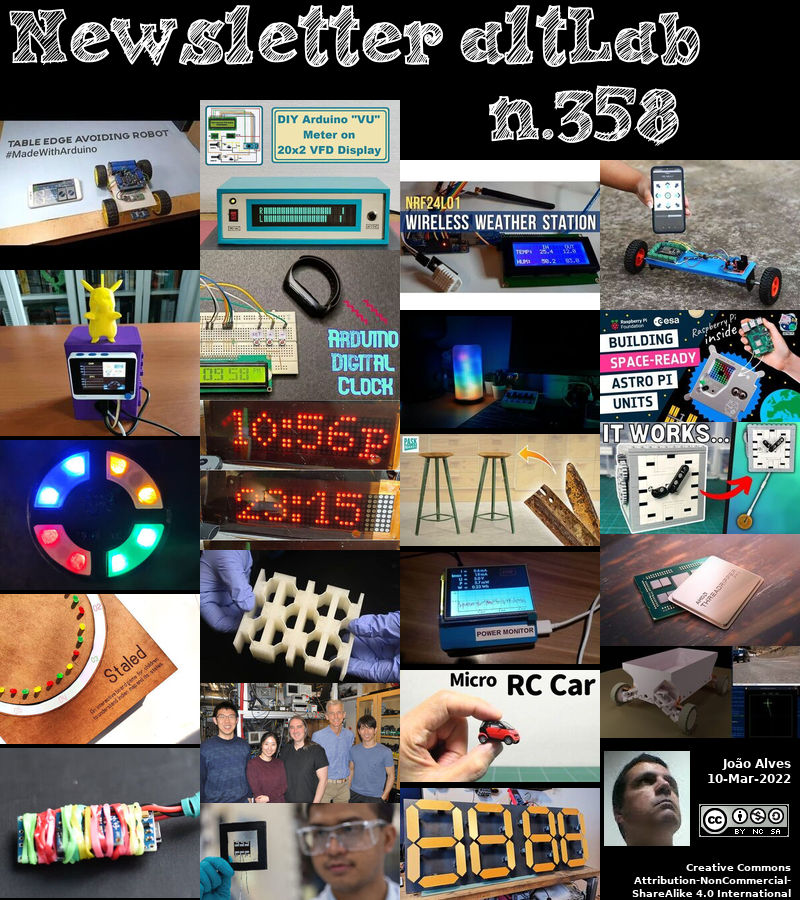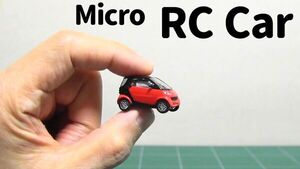2022-03-10 - Nº 358
Editorial
Esta é a Newsletter Nº 358 que se apresenta com o mesmo formato que as anteriores. Se gostar da Newsletter partilhe-a!
Todas as Newsletters encontram-se indexadas no link.
Esta Newsletter tem os seguintes tópicos:
Faz hoje anos que nascia, em 1762, o químico alemão Jeremias B. Richter. Ele descobriu a lei de proporções equivalentes. Estudou química nos seus tempos livres enquanto esteve no exército prussiano (1778-1785) e depois enquanto ganhava um doutoramento em matemática (1789). Richter foi muito influenciado por Immanuel Kant, a cujas palestras pode ter assistido, na alegação de que a ciência é matemática aplicada. Richter procurou relações matemáticas em química, convencido de que as substâncias reagiam umas com as outras em proporções fixas. Mostrou uma tal relação quando ácidos e bases neutralizam para produzir sais (1791). Assim, ele foi o primeiro a estabelecer a estequiometria, que se tornou a base da análise química quantitativa.
Faz também hoje anos que nascia, em 1923, o Físico de partículas norte-americano Val Logsdon Fitch. Ele recebeu conjuntamente com James Watson Cronin o Prémio Nobel da Física em 1980, por uma experiência realizada em 1964 que desmentiu a teoria há muito defendida de que a interacção de partículas deveria ser indiferente à direcção do tempo. Trabalhando com Leo James Rainwater, Fitch tinha sido o primeiro a observar radiação de átomos muónicos; ou seja, de espécies em que um muão está em órbita de um núcleo e não de um electrão. Este trabalho indicou que os tamanhos dos núcleos atómicos eram mais pequenos do que se supunha. Continuou a estudar o kaons e em 1964 iniciou a sua colaboração com James Cronin, James Christenson, e René Turley, que levou à descoberta de violações dos princípios de simetria fundamentais na decadência dos K-mesons neutros.
Em 1876, Alexander Graham Bell fez o que foi, na realidade, a primeira chamada telefónica. O seu assistente, Thomas Watson, localizado numa sala adjacente em Boston, ouviu a voz de Bell sobre o dispositivo experimental dizer-lhe: "Sr. Watson, venha cá. Eu quero vê-lo". Esta foi a primeira experiência bem sucedida de Bell com o telefone, que está gravada na entrada 10 Mar do seu caderno de notas do laboratório. Nesse mesmo dia, um ebuliente Bell escreveu ao seu pai sobre o seu "grande sucesso" e especulou que "está a chegar o dia em que os fios do telégrafo [telefone] serão colocados em casas como água e gás - e os amigos conversam uns com os outros sem sair de casa". Bell tinha recebido a primeira patente telefónica três dias antes. Mais tarde, nesse ano, Bell conseguiu fazer uma chamada telefónica através de linhas exteriores.
Em 1977 eram descobertos anéis à volta do planeta Saturno. Os astrónomos há muito que suspeitavam que Úrano tinha anéis, mas a verdadeira descoberta aconteceu por acidente. Uma equipa de três astrónomos estava a utilizar o Observatório Aéreo Kuiper da NASA para observar a atmosfera de Úrano. Fizeram-no durante uma ocultação estelar, o que significa que uma estrela de fundo estava a passar por detrás do planeta. Ver como a luz dessa estrela muda quando passava pela atmosfera podia dar pistas sobre a composição de Úrano.
Na Newsletter desta semana apresentamos diversas noticias, artigos científicos, projetos de maker e alguns vídeos interessantes.
 João Alves ([email protected])
João Alves ([email protected])
O conteúdo da Newsletter encontra-se sob a licença  Creative Commons Attribution-NonCommercial-ShareAlike 4.0 International License.
Creative Commons Attribution-NonCommercial-ShareAlike 4.0 International License.
Novidades da Semana
Outras Notícias

STMicroelectronics Releases Economical Radiation-Hardened ICs for Cost-Conscious ‘New Space’ Satellites
"ST’s new rad-hard components help Low-Earth Orbit satellites shrink the digital divide, expanding communication and earth-observation services STMicroelectronics (NYSE: STM), a global semiconductor leader serving customers across the spectrum of electronics applications, is simplifying the design and volume production of the new generation of reliable small, low-cost satellites to deliver services like earth observation and broadband internet from low-earth orbits (LEOs). ST’s new series of radiation-hardened power, analog, and logic ICs in low-cost plastic packages provide important functions for the satellites’ electronic circuitry. The first nine devices in this series have just been released and include a data converter, a voltage regulator, an LVDS transceiver, a line driver, and five logic gates that are used throughout systems like power generation and distribution, on-board computers, telemetry star trackers, and transceivers. ST will continue to grow the series adding more functions in the coming months to further expand designers’ choices. “We are in a new era of space commercialization and democratization, commonly called New Space, which radically changes the economics of conceiving, building, launching, and operating satellites. These formerly low-volume, specialized space vehicles are quickly becoming commoditized for deployment in large constellations sometimes comprising several thousands of units,” said Marcello San Biagio, General Purpose and RF Division General Manager, STMicroelectronics." [...]

New AMD Ryzen Threadripper PRO 5000 WX-Series Processors are the Ultimate Workstation Processors for Professionals with Up-to Double the Performance of Competing Solutions
"Today, AMD (NASDAQ: AMD) announced the new AMD Ryzen™ Threadripper™ PRO 5000 WX-Series workstation processors, led by the 64-core, 128-thread AMD Ryzen Threadripper PRO 5995WX. Building on the best-selling and award-winning Ryzen Threadripper PRO 3000 WX processors, the Ryzen Threadripper PRO 5000 WX-Series processors bring dominant, full-spectrum performance leadership across multiple workstation workloads due to the performance and efficiency of the “Zen 3” core architecture and increased processor frequencies.1,2 Today also marks the launch of the first workstations powered by the new AMD Ryzen Threadripper PRO 5000 WX-Series processors – the Lenovo ThinkStation P620 featuring all five of the AMD Ryzen Threadripper PRO 5000 WX-Series processor models – providing workstation users with industry-leading performance.2 “For many workstation users, success is dependent on having the right tools to complete jobs quickly, which is why they need hardware that provides unmatched performance and gives them a competitive edge,” said Saeid Moshkelani, senior vice president and general manager, client business unit. “We created the Ryzen Threadripper PRO Ryzen 5000 WX-Series processors with this in mind, bringing professionals the incredible performance and efficiency needed to run today’s most demanding workstation applications faster than ever before.” “We have rendered an incredible amount of frames with EPYC™ server processors and a Threadripper Pro 5000WX processor. The magic is in the iterations. A single visual effects shot could have hundreds or more updates and it takes immense processing power to turn around these iterations quickly,” said Paul Lambert, two-time Academy Award winner and VFX Supervisor for Dune. “We’ve been lucky to demo the new Threadripper PRO." [...]

Renesas Unveils R-Car V4H for Automated Driving Level 2+ / Level 3 to Support High-Volume Vehicle Production in 2024
"New Platform Innovates by Providing a Cutting-Edge Development Environment, Paving the Way to the Software-Defined Car Renesas Electronics Corporation (TSE:6723), a premier supplier of advanced semiconductor solutions, today announced the R-Car V4H system on chip (SoC) for central processing in advanced driver-assistance (ADAS) and automated driving (AD) solutions. The R-Car V4H achieves deep learning performance of up to 34 TOPS (Tera Operations Per Second), enabling high-speed image recognition and processing of surrounding objects by automotive cameras, radar, and lidar. The R-Car V4H enables market-leading performance per watt through a careful combination of best-in-class IP and expert HW optimization. It targets the highest volume zones of automated driving: Level 2+ and Level 3. Thanks to a high level of integration, the R-Car V4H allows customers to develop cost-competitive, single-chip, ADAS electric control units (ECUs). These control units may support driving systems appropriate for automated driving Levels 2+ and Level 3, including full NCAP 2025 features." [...]

Infineon and Sleepiz enable high-precision sleep monitoring at home based on radar technology
"Billions of people are facing sleep problems. According to scientific research*, about one billion people alone suffer from sleep apnea, an interrupted breathing during the night. This is leading to various health consequences including snoring, daytime fatigue, along with more difficult issues such as heart problems and diabetes. Diagnosing sleep apnea is challenging and often includes observing a patient in a sleep laboratory, a stressful situation which can lead to deviating results. To solve the issue, Infineon Technologies AG (FSE: IFX / OTCQX: IFNNY) is collaborating with Sleepiz AG, a Swiss digital health company. Together, they provide a solution for easy-to-use sleep monitoring at home." [...]

NASA’s Psyche Gets Huge Solar Arrays for Trip to Metal-Rich Asteroid
"With its solar arrays installed, the spacecraft is close to its final configuration ahead of a planned August launch. NASA’s Psyche mission is almost ready for its moment in the Sun – a 1.5-billion-mile (2.4-billion-kilometer) solar-powered journey to a mysterious, metal-rich asteroid of the same name. Twin solar arrays have been attached to the spacecraft body, unfolded lengthwise, and then restowed. This test brings the craft that much closer to completion before its August launch. “Seeing the spacecraft fully assembled for the first time is a huge accomplishment; there’s a lot of pride,” said Brian Bone, who leads assembly, test, and launch operations for the mission at NASA’s Jet Propulsion Laboratory in Southern California. “This is the true fun part." [...]
Ciência e Tecnologia
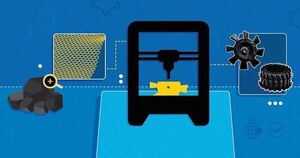
Sustainably Sourcing Coal Waste
"Engineering’s Fu, Jiao to refine filament manufacturing for 3D printing In the fight against climate change, one of the biggest challenges is addressing the potential economic and social impacts of shutting down greenhouse-gas producing operations. That’s why it’s so important to find a variety of alternative technologies that can help move communities toward more sustainable futures. Thanks to $1 million in Department of Energy funding, supplemented by another $250,000 in funding from the University of Delaware, Department of Mechanical Engineering Professor Kun (Kelvin) Fu and Department of Chemical and Biomolecular Engineering Professor Feng Jiao will spend the next three years working with students to find efficient and effective ways to use graphene particles from domestic coal wastes in Fused Deposition Modeling (FDM) 3D printing. The idea is to convert coal to a carbon material, which can then be added to filaments or resins used in the materials needed to feed these high-tech 3D printers. Six other universities and organizations also received millions in DOE funding to explore additive manufacturing alternatives involving coal-derived materials. “Right now, the Department of Energy is looking for new technologies to neutralize coal as a carbon feedstock,” Jiao said." [...]

Paper discs that can pick up hydrogen peroxide
"Researchers at the Indian Institute of Science (IISc) have developed a paper-based sensor for detecting even tiny volumes of hydrogen peroxide. This chemical is used widely in household and healthcare products like hand sanitiser as a disinfectant, in rocket fuel as a propellant, and is also found in biological cells. The technique they used involves preparing a gel from a solution containing a specially designed molecule, treated with a liquid that has hydrogen peroxide, and air-drying them on a thin paper disc about 0.45 cm in diameter. The paper disc emits green light when placed under a UV lamp, only in the presence of hydrogen peroxide. The intensity of the light was found to be directly proportional to the concentration of hydrogen peroxide. “You can actually visualise this green emission (photoluminescence) with the naked eye." [...]
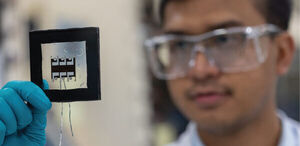
A tailored coat to beat the heat
"Multilayered perovskite-based films, designed by KAUST researchers, shield high-performance perovskite solar cells from extreme heat and moisture while also boosting their long-term stability, which is a key milestone for device commercialization. Perovskite solar cells have emerged as the fastest growing alternative to the conventional silicon technology that dominates the photovoltaic market. Cheaper and easier to manufacture, they have shown a dramatic continual rise in performance, potentially surpassing their silicon-based equivalents. However, inherent surface defects and ion migration affect the stability of the light-responsive perovskite film, a phenomenon that becomes more pronounced at higher temperatures. Sandwiched between charge carrier-selective materials, the three-dimensional (3D) perovskite film converts light to electricity by creating pairs of electrons and positively charged holes. Upon charge separation and collection, electrons migrate toward the "n-type" layer while holes migrate toward the "p-type" layer, producing an electric current." [...]
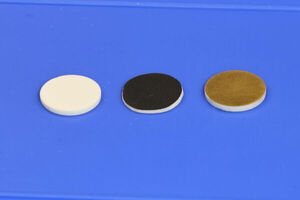
Toward batteries that pack twice as much energy per pound
"A method for stabilizing the interfaces in solid-state lithium-ion batteries opens new possibilities. In the endless quest to pack more energy into batteries without increasing their weight or volume, one especially promising technology is the solid-state battery. In these batteries, the usual liquid electrolyte that carries charges back and forth between the electrodes is replaced with a solid electrolyte layer. Such batteries could potentially not only deliver twice as much energy for their size, they also could virtually eliminate the fire hazard associated with today’s lithium-ion batteries. But one thing has held back solid-state batteries: Instabilities at the boundary between the solid electrolyte layer and the two electrodes on either side can dramatically shorten the lifetime of such batteries. Some studies have used special coatings to improve the bonding between the layers, but this adds the expense of extra coating steps in the fabrication process." [...]

Researchers Use Flat Lenses to Extend Viewing Distance for 3D Display
"New approach lays groundwork for compact 3D displays that create more realistic virtual scenes Researchers have demonstrated a prototype glasses-free 3D light field display system with a significantly extended viewing distance thanks to a newly developed flat lens. The system is an important step toward compact, realistic-looking 3D displays that could be used for televisions, portable electronics and table-top devices. Light field displays use a dense field of light rays to produce full-color real-time 3D videos that can be viewed without glasses. This approach to creating a 3D display allows several people to view the virtual scene at once, much like a real 3D object. “Most light field 3D displays have a limited viewing range, which causes the 3D virtual image to degrade as the observer moves farther away from the device,” said research team leader Wen Qiao from Soochow University. “The nanostructured flat lens we designed is just 100 microns thick and has a very large depth of focus, which enables a high-quality virtual 3D scene to be seen from farther away.” In Optica, Optica Publishing Group’s journal for high-impact research, the researchers report that their prototype display exhibits high efficiency and high color fidelity over viewing distances from 24 cm to 90 cm." [...]

A Zigzag Blueprint For Topological Electronics
"A collaborative study led by the University of Wollongong confirms switching mechanism for a new, proposed generation of ultra-low energy ‘topological electronics’. Based on novel quantum topological materials, such devices would ‘switch’ a topological insulator from non-conducting (conventional electrical insulator) to a conducting (topological insulator) state, whereby electrical current could flow along its edge states without wasted dissipation of energy. Such topological electronics could radically reduce the energy consumed in computing and electronics, which is estimated to consume 8% of global electricity, and doubling every decade. Led by Dr Muhammad Nadeem at the University of Wollongong (UOW), the study also brought in expertise from FLEET Centre collaborators at UNSW and Monash University. RESOLVING THE SWITCHING CHALLENGE, AND INTRODUCING THE TQFET Two-dimensional topological insulators are promising materials for topological quantum electronic devices where edge state transport can be controlled by a gate-induced electric field. However, a major challenge with such electric-field-induced topological switching has been the requirement for an unrealistically large electric field to close the topological bandgap." [...]
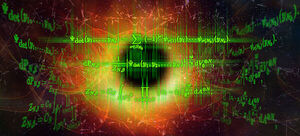
Mathematical discovery could shed light on secrets of the Universe
"How can Einstein's theory of gravity be unified with quantum mechanics? This challenge could give us deep insights into phenomena such as black holes and the birth of the universe. Now, a new article in Nature Communications, written by researchers from Chalmers University of Technology, Sweden, and MIT, USA, presents results that cast new light on important challenges in understanding quantum gravity. A grand challenge in modern theoretical physics is to find a ‘unified theory’ that can describe all the laws of nature within a single framework – connecting Einstein's general theory of relativity, which describes the universe on a large scale, and quantum mechanics, which describes our world at the atomic level. Such a theory of ‘quantum gravity’ would include both a macroscopic and microscopic description of nature. “We strive to understand the laws of nature and the language in which these are written is mathematics." [...]

JHU-Created Material Could Lead to Lighter and Safer Helmets and Vehicles
"A team of Johns Hopkins University researchers created shock-absorbing material that protects like a metal, but is lighter, stronger, reusable. The new foam-like material could be a game-changer for helmets, body armor, and automobile and aerospace parts. “We are excited about our findings on the extreme energy absorption capability of the new material,” said senior author Sung Hoon Kang, an assistant professor of mechanical engineering. “The material offers more protection from a wide range of impacts, but being lighter could reduce fuel consumption and the environmental impact of vehicles while being more comfortable for protective gear wearers.” Kang, who is also a fellow at the Hopkins Extreme Materials Institute, wanted to create a material even more energy-absorbing than current car bumpers and helmet padding. He noticed the typical materials used for these critical protective devices don’t perform well at higher speeds and often aren’t reusable. The research team increased the material’s ability to withstand impact by using high energy-absorbing liquid crystal elastomers (LCEs), which have been used mainly in actuators and robotics." [...]

Wormholes help resolve black hole information paradox
"A mathematical analysis helps illuminate the puzzle over how information escapes from a black hole A RIKEN physicist and two colleagues have found that a wormhole—a bridge connecting distant regions of the Universe—helps to shed light on the mystery of what happens to information about matter consumed by black holes1. Einstein’s theory of general relativity predicts that nothing that falls into a black hole can escape its clutches. But in the 1970s, Stephen Hawking calculated that black holes should emit radiation when quantum mechanics, the theory governing the microscopic realm, is considered. “This is called black hole evaporation because the black hole shrinks, just like an evaporating water droplet,” explains Kanato Goto of the RIKEN Interdisciplinary Theoretical and Mathematical Sciences. This, however, led to a paradox. Eventually, the black hole will evaporate entirely—and so too will any information about its swallowed contents." [...]
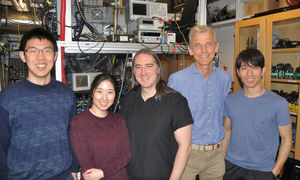
Physicists steer chemical reactions by magnetic fields and quantum interference
"Physicists in the MIT-Harvard Center for Ultracold Atoms (CUA) have developed a new approach to control the outcome of chemical reactions. This is traditionally done using temperature and chemical catalysts, or more recently with external fields (electric or magnetic fields, or laser beams). MIT CUA physicists have now added a new twist to this: They have used minute changes in a magnetic field to make subtle changes to the quantum mechanical wavefunction of the colliding particles during the chemical reaction. They show how this technique can steer reactions to a different outcome: enhancing or suppressing reactions. This was only possible by working at ultralow temperatures at a millionth of a degree above absolute zero, where collisions and chemical reactions occur in single quantum states. Their research was published in Science on March 4." [...]
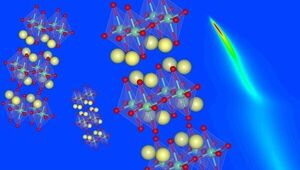
Physicists Uncover the Secret Behind the Behavior of Unique Superconducting Materials
"The Science Over the last 35 years, scientists have investigated a special type of materials called superconductors. When cooled to the correct temperatures, these materials allow electricity to flow without resistance. One team is researching superconductors using the Summit supercomputer. The team found that negative particles in the superconductors interact strongly with the smallest units of light in the materials. This interaction leads to sudden changes in the materials’ behavior. This interaction is at the root of understanding how a certain type of copper-based superconductor works." [...]
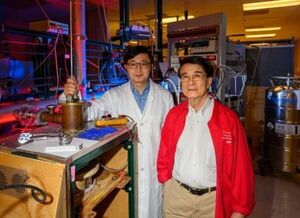
Working to Revolutionize the Way We Live
"University of Houston Researchers Exploring the Bounds of Room-Temperature Superconductivity. In the simplest terms, superconductivity between two or more objects means zero wasted electricity. It means electricity is being transferred between these objects with no loss of energy. Many naturally occurring elements and minerals like lead and mercury have superconducting properties. And there are modern applications that currently use materials with superconducting properties, including MRI machines, maglev trains, electric motors and generators. Usually, superconductivity in materials happens at low-temperature environments or at high temperatures at very high pressures." [...]

Molecules, rare earths, and light: an innovative platform for quantum computers and communications
"The ability to interact with light provides important functionalities for quantum systems, such as communicating over large distances, a key ability for future quantum computers. However, it is very difficult to find a material that can fully exploit the quantum properties of light. A research team from the CNRS and l’Université de Strasbourg, with support from Chimie ParisTech-PSL1 and in collaboration with German teams from KIT2 , has demonstrated the potential of a new material based on rare earths as a photonic quantum system. The results, which were published on 9 March 2022 in Nature, show the interest of europium molecular crystals for quantum memories and computers. While quantum technologies promise a revolution in the future, they still remain complex to put in place. For example, quantum systems that can interact with light to create processing functionalities for information and communication through fibre optics in particular, remain rare." [...]
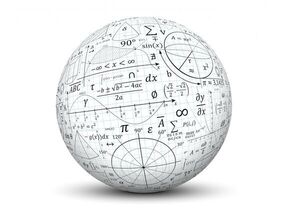
A First Step Towards Quantum Algorithms: Minimizing the Guesswork of a Quantum Ensemble
"In a groundbreaking study, researchers have derived analytical solutions to the guesswork problem for quantum ensembles A quantum ensemble—a set of quantum states with their corresponding probabilities—is essential to the encoding of classical information for transmission over quantum channels. But receivers must be able to ‘guess’ the transmitted quantum state, incurring a cost called ‘guesswork.’ Recently, researchers have derived analytical solutions of the guesswork problem for when the ensemble is subject to a finite set of conditions. The results constitute a first step towards future algorithms for quantum software. Given the rapid pace at which technology is developing, it comes as no surprise that quantum technologies will become commonplace within decades. A big part of ushering in this new age of quantum computing requires a new understanding of both classical and quantum information and how the two can be related to each other. Before one can send classical information across quantum channels, it needs to be encoded first." [...]

On the Hunt for Ultra-Thin Materials Using Data Mining
"Two-dimensional (2D) materials possess extraordinary properties. They usually consist of atomic layers that are only a few nanometers thick and are particularly good at conducting heat and electricity, for instance. To the astonishment of many scientists, it recently became known that 2D materials can also exist on the basis of certain metal oxides. These oxides are of great interest in areas such as nanoelectronics applications. A German-American research team, led by the Helmholtz-Zentrum Dresden-Rossendorf (HZDR), has now succeeded in predicting twenty-eight representatives of this new class of materials by using data-driven methods. There is a substantial difference between conventional 2D materials such as graphene and the novel materials that can be synthesized from metal oxides such as ilmenite and chromite." [...]
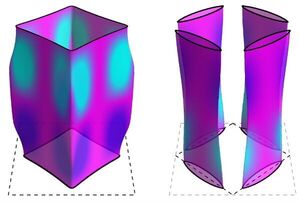
Magnetism helps electrons vanish in high-temp superconductors
"Superconductors – metals in which electricity flows without resistance – hold promise as the defining material of the near future, according to physicist Brad Ramshaw, and are already used in medical imaging machines, drug discovery research and quantum computers being built by Google and IBM. However, the super-low temperatures conventional superconductors need to function – a few degrees above absolute zero – make them too expensive for wide use. In their quest to find more useful superconductors, Ramshaw, the Dick & Dale Reis Johnson Assistant Professor of physics in the College of Arts and Sciences (A&S), and colleagues have discovered that magnetism is key to understanding the behavior of electrons in “high-temperature” superconductors. With this finding, they’ve solved a 30-year-old mystery surrounding this class of superconductors, which function at much higher temperatures, greater than 100 degrees above absolute zero. Their paper, “Fermi Surface Transformation at the Pseudogap Critical Point of a Cuprate Superconductor,” published in Nature Physics March 10. “We’d like to understand what makes these high-temperature superconductors work and engineer that property into some other material that is easier to adopt in technologies,” Ramshaw said." [...]
Projetos Maker
Diversos Projetos interessantes.
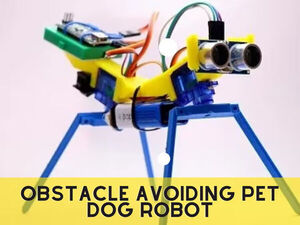
Obstacle Avoiding Pet Dog Robot TOMY Using Arduino
"The dogs are considered a valuable partner of human beings in times of danger, loneliness, and happiness. The dogs are considered a valuable partner of human beings in times of danger, loneliness, and happiness. Most people spend a lot of time with their pets in their daily life. The robotics dog “Tomy” is specially designed for people who love robots, codding, and also dogs. They want to put their own creativity into making nonliving a living. I made a robotic dog that walks and my aim is to help people to understand robotics engineering very well and also to aid students to put further creativity in their projects." [...]
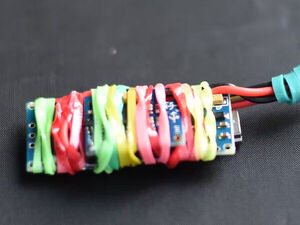
SweetMaker MotionSensor Library Tutorial
"Adding Motion sensing to projects is fun but can be hard - this library makes it easier. Motion Sensors are great fun to use in projects adding interaction and dynamism to what we make - but they can be hard to use with various pitfalls. This library simplifies the use of the MPU6050 motion sensor by adding various features and illustrating how to use the sensor. The SweetMaker MotionSensor Library offers the following features: - Easy integration and use in Arduino projects - Calibration routines for the MPU6050 - Generates Rotational Quaternion - (Downloads MPU6050 DMP code) - Provides Auto-Level re-orientation - Allows Auto-Level + Z-Axis re-orientation - Provides 3D rotational speed indication - Provides orientation of sensor with respect to gravity - Calculates how close the sensor is to arbitrary orientation of interest - Implemented using Integer programming for efficiency - Avoids trigonometric functions for efficiency - Integrates with the SweetMaker framework" [...]
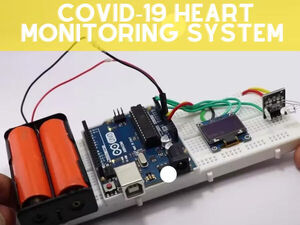
Covid-19 Heart Monitoring System using Arduino
"The Heart monitoring system is the most common management system to detect heart attacks and expected heart failure, before the ECG monitoring system. In this project, I will describe the development of an effective heart monitoring system with the help of Arduino, OLED, and pulse sensors. If you are planning to develop a project that solves a particular problem that this project is specified for you. Currently, the heart monitoring system is too expensive, while the Covid-19 increases it demand therefore it has become difficult for the common man to buy such a type of system. This post instructs you to develop a heart monitoring system step by step with the help of a circuit diagram and code with instructions, so you don't need to go anywhere else for its development. What exactly the Arduino Plus monitor is?" [...]

Simon clone with Arduino Nano
"A very simple tutorial with few basic components and an Nano or Uno: A clone of the world famous 1978 Simon by Milton Bradley I was playing with my original, 1978 Simon by Milton Bradley and I realized it would be an easy and amazing project to do with an Arduino Nano, Uno, Mini Pro, etc. It doesn't require many components, just few buttons, LED, resistors and a switch to select the game level, and it's a very good and easy project for beginners. The sketch is simple to understand and well commented, so it should be easy to understand how it works. Just assemble the components as shown by the schematics, compile and upload the code and you're done. " [...]

Smartphone Controlled Pick and Place Robot with Code
"A smartphone-controlled robotic car with an arm on it with acomplete project report, code, and circuit diagram. which can pick up to 9 gram. What is a robotic arm used for? The robot uses motion sensors to make sure it moves just the right amount. An industrial robot with six joints closely resembles a human arm -- it has the equivalent of a shoulder, an elbow and a wrist. What are the parts of a robotic arm?" [...]
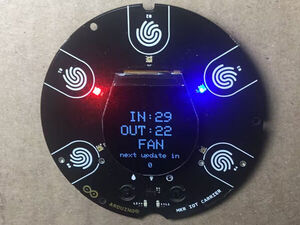
Smart Plant Incubator
"Help your baby plants get the sunlight they need while protecting them from wild temperature variations. Why this project? Like many people, my parents grow plants from seed in the early spring. When the seeds sprout my parents place them outside in a box with glass on top to allow the seedlings to get the sunlight they need while protecting them from cold temperatures and wind. The baby plants stay in the box until it's warm enough outside that they will be okay on their own (about a month) and then they are planted in the garden. The problem is that plants like a fairly narrow range of temperatures and the box can go from 50C all the way down to below freezing at night." [...]

ATtiny1614 Simon Clone
"A fully 3D printed battery operated Simon game with score, sound and deep sleep mode. Recently giobbino, a fellow Hackster, uploaded a 3D printed version of a Simon game clone. I liked the case in this design because it was a lot closer to the original Simon game. Unfortunately the 3D printer files are not included so I had to design my own. Also I have always felt that the game should show feedback with a running sequence count, hence the reason why my builds always show the sequence length achieved so far in the game. Design While my previous builds used the Arduino Pro Mini, this time I wanted to use a more modern CPU with a very low power sleep mode." [...]
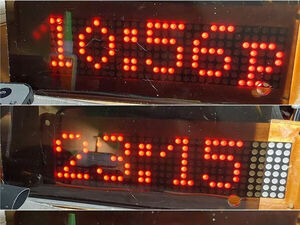
Talking alarm clock with 8x8x4 matrix display
"Wake to any of 100's of MP3 messages from SDRAM. Scrolling display w/remote shows clearly w/o glasses. Temp too! This is my second Arduino build. Lots of fab issues have been resolved and this is more of a bolt up than the first. Lots of functional software is being ported." [...]
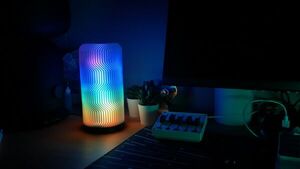
Neowave - RGB WiFi Moodlamp
"In this tutorial, I will show you how I made this RGB lamp! The lamp is mostly 3D printed, and is easy to assemble. It uses an array of WS2812B individual addressable RGB LEDs, which gives it the ability to not only show every color, but also in different effects, like simulating a fire. All of this can be controlled via the app, WLED. It can also be set up with different presets, which can be triggered by smart home devices like Google Home and Alexa, as well as being paired with Home Assistant. The lamp also has a button on top, for local control." [...]
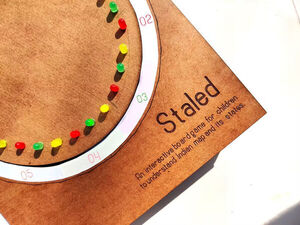
Arduino led roulette | Super simple and amazing
"This is an Arduino uno led project where the leds spin and stop at a random place. Firstly, thanks a lot that you decided to take a look at my project. I appreciate it. Now, lets start. I am a student currently at a design school in India. This project really came unexpected and I am extremely happy to see how it turned out." [...]

DIY Arduino VFD display 20x2 VU (Volume Unit) Meter
"How to make a VU meter with 38 bars per channel on a modified 20x2 VFD display. A vacuum fluorescent display (VFD) is a display device commonly used on consumer electronics equipment. VFD emits a very bright light with high contrast. Due to these features and the beautiful retro look, the devices made with these displays are very popular with do it yourself enthusiasts, but at the same time very complex in terms of connection and the way of communication with the microcontroller. Another difficulty is the fact that in most cases they have almost no documentation and there are no libraries to simplify the code. This time I will show you how to make a VU meter with 38 bars per channel on a 20x2 VFD display." [...]
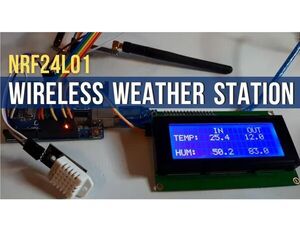
Arduino Wireless Weather Station Using NRF24L01, DHT11-DHT22
"Build a wireless weather station using two NRF24L01 modules that will Display both Indoor and Outdoor Temperature & Humidity. Step 1: What You Will Need: 2X Arduino UNO (or any other Arduino) LCD I2C Display 20X4 2x nrf24l01 module 2X DHT11 or DHT22 sensor Jumper wires Visuino program: Download Visuino" [...]
How to make Wi-Fi Controlled Sefl-balancing robot | ESP8266
"I have already made so many wifi-controlled robots using ESP8266. Today, l am making wifi controlled bot like before but it's self-balanced. I have already made so many wifi-controlled robots at home using ESP8266. Now, I have decided to make the same wifi-controlled bot but with an upgraded version. So here I am going to make a self-balancing bot. I really hope this will be more interesting than before." [...]
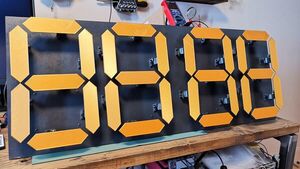
Electromechanical 7-Segment Display
"The goal here was two-fold; create something stylish that would look good when hung up on a wall, and ensure that all movements were as quiet as possible! I was inspired by some great existing projects that I have bookmarked below, but most had used noisy servos. Using my idea to retrofit silent stepper drivers from 3D printers, I built, tested and coded my clock completely from scratch over 2-3 months of my spare time. Motor choice. For the purpose of making all movements as quiet as possible, I wanted to completely avoid using servo motors (which ruled out 5 of my 6 inspirations…). Servos are not designed for silent operation." [...]
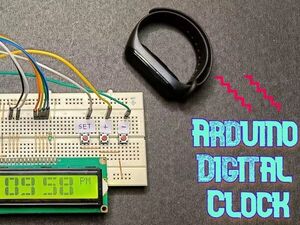
Arduino Digital Clock
"Digital Clock without RTC" [...]
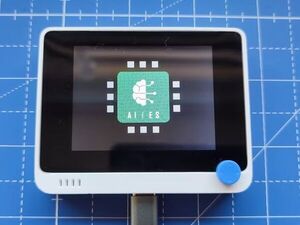
WIO Terminal AI gesture recognition with on-device training
"Train an artificial neural network directly on the Wio terminal with AIfES® to recognize simple gestures. Introduction In this tutorial we would like to show you how to implement a simple AI based gesture recognition with AIfES® on the Wio Terminal. The special thing here is that everything is implemented directly on the Wio Terminal without the need for a PC. Three different gestures can be trained. As AI an artificial neural network (ANN) is used, which can be trained with the Adam optimizer in AIfES® directly on the device. The internal 3-axis digital accelerometer (LIS3DHTR) is used for the gesture recognition." [...]

Newone
"Newone is a 3D printed, open-source transport vehicle designed by Open-ATS for an autonomous and rapid transport. Newone is the world's first 3D printed, cellular transport vehicle programmed in Python. Using open-source software and 3D printed parts allows us to design the most expensive parts basically for free, which in turn drives down the cost of transportation. The vehicle is fully controlled over the internet. Cameras on the vehicle allow you to navigate it all over the world with a notebook and a standard gamepad. We are using only open-source software (Python, Blender, Debian, OpenCV, Pigame, Raspian...) so it's free and for everyone accesible!" [...]
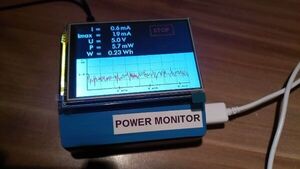
Power Monitor for Electronic Prototypes and Devices
"Hi all, since I m planning to use solar modules and accumulators to provide energy for some of my next projects, I have to find out how much power every circuit needs. One way is to connect a multimeter in series with the load to measure the current. With the help of the current I would be able to calculate the power and work. But the connection of the multimeter for every circuit needs time for wiring. Furthermore I would have to observe the measurement all time and would be difficult to get a overall picture from many single measurements. Therefore I build a power monitor to measure the power consumption of my components fast and easy." [...]
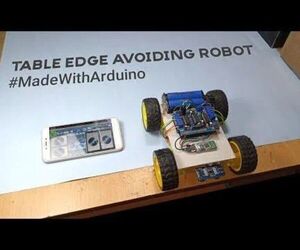
How to Make Table Edge Avoiding Robot || #MadeWithArduino.
"Hey Guys, welcome to my first Instructables article. So guys today we are going to make a " Table Edge Avoiding Robot ". Let me first tell you about the main working principle of this robot: This car uses a very working principle that is as follows: ~ When the car reaches the end of the table i.e. the edge of the table the ultrasonic sensor detects the depth of it and it makes the car go back. If you have not understood its working principle then take a look at the whole tutorial you might then understand it... So let's get started with the project :-) Supplies: - Arduino Uno - L298D Motor Driver - Bluetooth Module - UltraSonic Sensor - Gear Motor - Rubber Wheel - Battery Holder - Battery" [...]
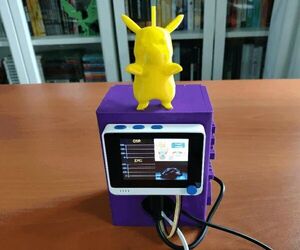
Mouse Fatigue Estimation by GSR and EMG Values W/ TensorFlow
"Collate forearm muscle soreness data on the SD card, build and train a neural network model, and run the model directly on Wio Terminal. Supplies 1 x Wio Terminal 1 x Grove - GSR Sensor 1 x Grove - EMG Detector 1 x Creality CR-6 SE 3D Printer 1 x Grove - 4 pin Male Jumper Conversion Cable 1 x Grove - Universal 4 Pin Cable 1 x SD Card 1 x Xiaomi 20000 mAh 3 Pro Type-C Power Bank Like many of us, I spent most of my waking hours on the computer while working or studying. However, recently, I have started to feel a precipitous pain on my forearm after utilizing the mouse longer than six hours. Therefore, I decided to create this project to get prescient warnings regarding forearm muscle soreness levels so as to prevent any injury risks. Since utilizing the mouse involves monotonous movements of the same small muscle groups for protracted periods of time, overusing the mouse by positioning, traveling, scrolling, and clicking can make these muscle groups tired and overworked. Hence, after repetitive overexposure to monotonous mouse movements, muscle stress (soreness) increases precipitously and can engender[1]: Pain (ache, soreness) on the top of the hand Pain (ache, soreness) around the wrist Pain (ache, soreness) along the forearm and the elbow Numbness and tingling in the thumb and the index finger Burning, stiffness, restricted range of motion Also, it can cause soreness and fatigue by putting extra strain on the muscles in the upper back (trapezius muscle) and shoulder (deltoid muscle)." [...]

Ljinux
"A "linux" written in python, for the Raspberry Pi Pico. Important note: Do not take this project seriously. I know it's not a linux, or an os, or anything in that regard, but here we are. Anyways, since you are still reading let's start with the basics. It runs on the rpi pico, circuitpython. As for the display I use a SSD1306 over I2C, it's optional tho." [...]
Secção Videos
Videos interessantes.
That's all Folks!



